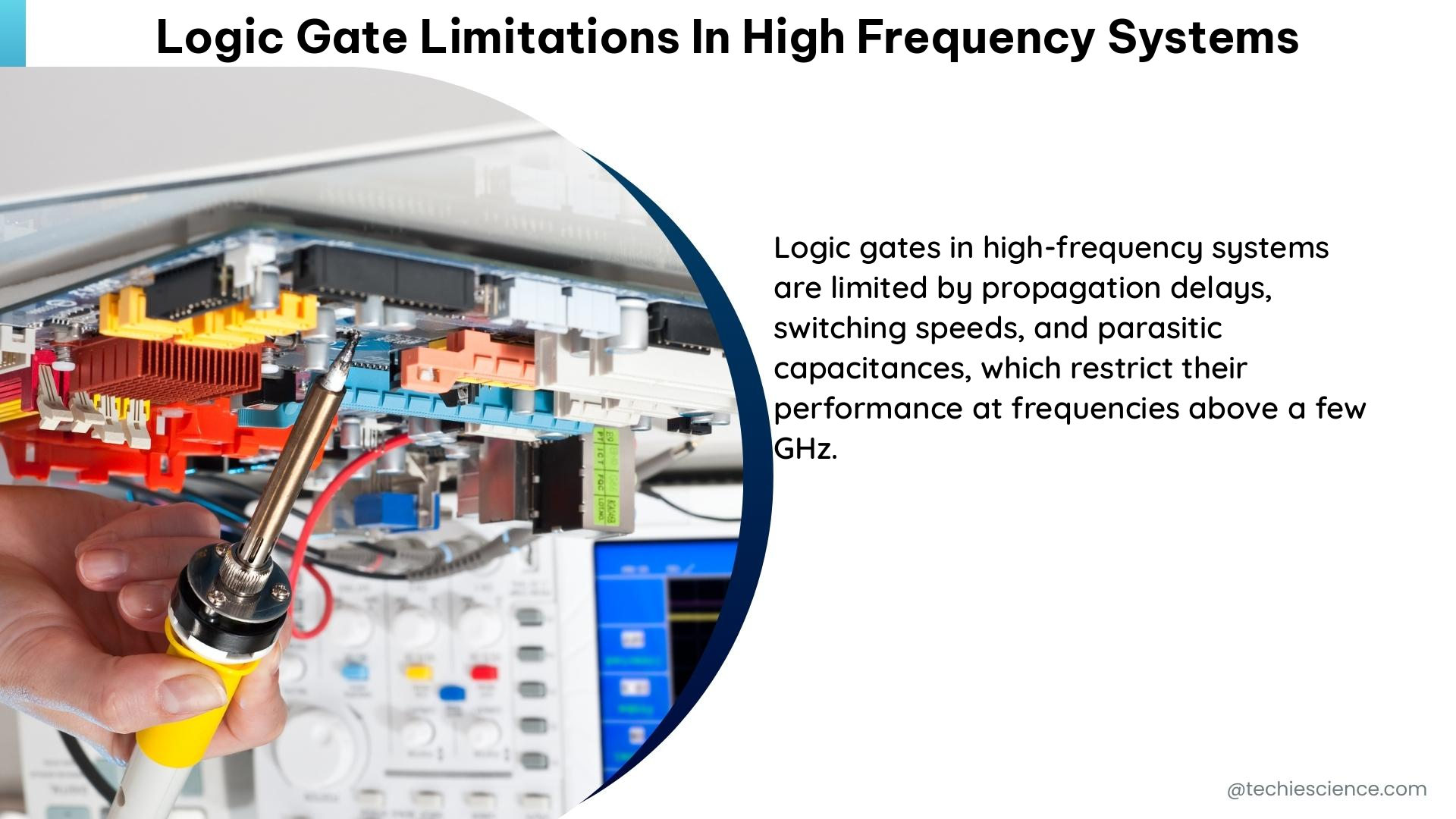In the realm of digital electronics, the performance of logic gates is paramount, especially when operating at high frequencies. The limitations of logic gates in high-frequency systems can be quantified by various parameters, including propagation delay time, power dissipation, and speed-power product (SPP). Understanding these parameters is crucial for designing efficient and reliable high-frequency circuits.
Propagation Delay Time
The propagation delay time, denoted as tP, is a critical parameter that determines the switching speed or frequency at which a logic circuit can operate. This time interval represents the delay between the transition of an input pulse and the occurrence of the resulting transition of the output pulse. The propagation delay time is measured in nanoseconds (ns) and varies depending on the type of logic gate family.
| Logic Gate Family | Propagation Delay (ns) |
|---|---|
| HCT CMOS | 7 ns |
| AC CMOS | 5 ns |
| ALVC CMOS | 3 ns |
| Standard TTL | 11 ns |
| F-family TTL | 3.3 ns |
The propagation delay time is a crucial factor in determining the maximum operating frequency of a logic circuit. As the frequency increases, the propagation delay becomes more significant, limiting the overall performance of the system.
Power Dissipation

Power dissipation is another important parameter that characterizes the limitations of logic gates in high-frequency systems. It represents the amount of power consumed by a logic gate during operation, measured in watts (W) or milliwatts (mW). The power dissipation of a logic gate depends on the type of logic gate family and the frequency of operation.
For CMOS logic gates, the power dissipation is directly proportional to the frequency of operation. At zero frequency (quiescent state), the power dissipation is typically in the microwatt/gate range, while at the maximum operating frequency, it can reach the low milliwatt range.
As an example, the HC family of CMOS logic gates has the following power dissipation characteristics:
- Quiescent power (0 Hz): 2.75 mW/gate
- Power at 1 MHz: 600 mW/gate
The power dissipation of a logic gate is an important consideration, as it affects the overall power consumption of the system and the thermal management requirements.
Speed-Power Product (SPP)
The speed-power product (SPP) is a parameter that combines the propagation delay time and the power dissipation to provide a measure of the performance of a logic circuit. It is expressed in picojoules per gate (pJ/gate) and is useful for comparing the performance of different logic gate series within the CMOS and bipolar technology families, or for comparing a CMOS gate to a TTL gate.
The SPP is calculated as the product of the propagation delay time and the power dissipation:
SPP = Propagation Delay Time (tP) × Power Dissipation (P)
A lower SPP value indicates a more efficient logic gate, as it combines both speed and power consumption.
High-Frequency Leakage Current Model
In addition to the aforementioned parameters, the high-frequency leakage current model can be used to characterize the impact of high-frequency electromagnetic interference (EMI) on the performance and failure modes of digital logic gates.
The leakage current model takes into account the transfer function of the device under test (DUT) and uses assumptions and approximations to investigate the correlation between RF injection and leakage current. This model can help identify potential failure modes and design strategies to mitigate the effects of high-frequency EMI on logic gate performance.
Conclusion
In summary, the limitations of logic gates in high-frequency systems can be quantified by several key parameters, including propagation delay time, power dissipation, and speed-power product (SPP). Understanding these parameters is crucial for designing efficient and reliable high-frequency digital circuits.
Additionally, the high-frequency leakage current model provides a valuable tool for characterizing the impact of electromagnetic interference on logic gate performance, enabling engineers to develop robust and resilient high-frequency systems.
By considering these factors and leveraging the available data and techniques, electronics engineers can optimize the design and performance of logic gates in high-frequency applications, ensuring the reliable and efficient operation of their digital systems.
References
- Propagation Delay Time
- Application of High-Frequency Leakage Current Model for Characterizing Failure Modes in Digital Logic Gates
- Reliable Domain‐Specific Exclusive Logic Gates Using Reconfigurable Sequential Logic Based on Antiparallel Bipolar Memristors
- Frequency-domain ultrafast passive logic: NOT and XNOR gates

The lambdageeks.com Core SME Team is a group of experienced subject matter experts from diverse scientific and technical fields including Physics, Chemistry, Technology,Electronics & Electrical Engineering, Automotive, Mechanical Engineering. Our team collaborates to create high-quality, well-researched articles on a wide range of science and technology topics for the lambdageeks.com website.
All Our Senior SME are having more than 7 Years of experience in the respective fields . They are either Working Industry Professionals or assocaited With different Universities. Refer Our Authors Page to get to know About our Core SMEs.